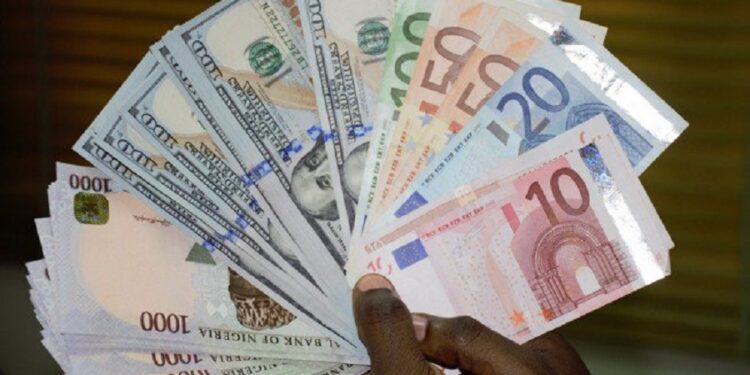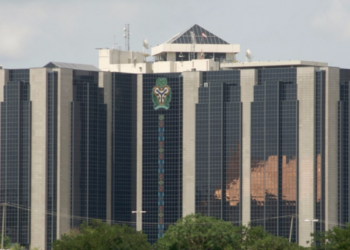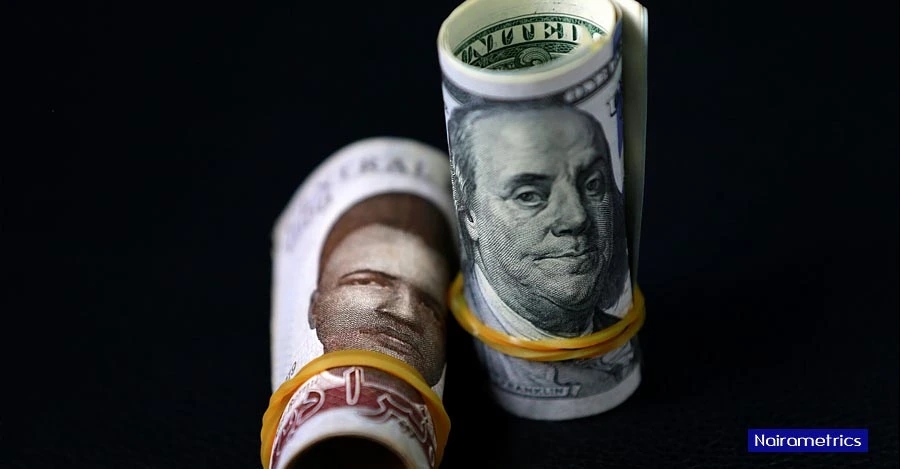The Nigerian currency began the week on a bearish note as the U.S. dollar index showed strong performance in the global market.
The NGN/USD exchange rate is currently trading at its lowest point since March amid growing speculation about interest rate cuts by the U.S. Federal Reserve.
The Nigerian naira settled at N1,596.6/$, following a drop in FX liquidity at the country’s official foreign exchange market.
This represents a 1.66% drop from N1,570.14 on Friday at the Nigerian Autonomous Foreign Exchange Market, according to data from the FMDQ.
Transaction volume decreased as daily FX market turnover fell from $120.81 million on Friday to $102.93 million on Monday, a 14.8% decline.
However, on the black market, the local currency showed mild strength, quoted at N1,610/$ on Monday compared to N1,615/$ on Friday.
The local currency has experienced significant volatility, falling by over 45% since it was floated in June of last year, exposing it to market fluctuations.
Despite the U.S. Federal Reserve’s Jerome Powell signaling a potential rate cut at the Jackson Hole symposium on August 23, 2024, it had a minimal immediate impact.
The Central Bank of Nigeria (CBN) has maintained a hawkish stance to achieve price stability and increase incentives for investment in naira-denominated assets.
However, recent fundamentals reveal that the naira’s value is constrained by fiscal issues such as underinvestment, tepid oil production, and insecurity, despite the benchmark interest rate being raised by 800 basis points to 26.75% in less than a year.
U.S. Dollar Index Shows Strength
The U.S. Dollar Index recovered some ground on Monday, hovering around 101 index points after falling last week. Jerome Powell’s dovish remarks at the Jackson Hole Symposium on Friday were interpreted as a potential shift towards looser monetary policy by the Fed.
As a result, the 10-year U.S. yield fell below 3.8 points, negatively affecting the USD. The market’s enthusiasm for aggressive monetary easing appears misplaced, even with positive economic growth exceeding projections.
The evidence indicates a mismatch between market pricing and economic fundamentals, with the dollar index finding support at its lowest point since December, suggesting a temporary easing of selling pressure.
The Relative Strength Index (RSI) remains well below oversold levels, indicating that additional upward corrections may be possible.
However, there are no clear signs of a turnaround, and the dollar index remains vulnerable to further declines. Key support levels to watch are 100.00, 100.50, and 100.30.
Citi’s Outlook on the Dollar Index
- Citi recently highlighted the potential for the U.S. dollar to strengthen, noting several factors that could influence the haven currency.
- The global bank pointed out that the U.S. Dollar Index, which measures the greenback’s strength against six major currencies, has reached significant support levels in the range of 100.30–100.82 index points.
- Citi’s analysis also identified emerging weaknesses in the European Union’s economic data and factors in the U.S. that could favour a stronger dollar, including upcoming elections.
- Historical data shows that September is often a favourable month for the dollar, with positive returns recorded in eight of the last ten years.
- According to Citi’s analysis, investors tend to seek the safety of the U.S. dollar when risk-averse.



















